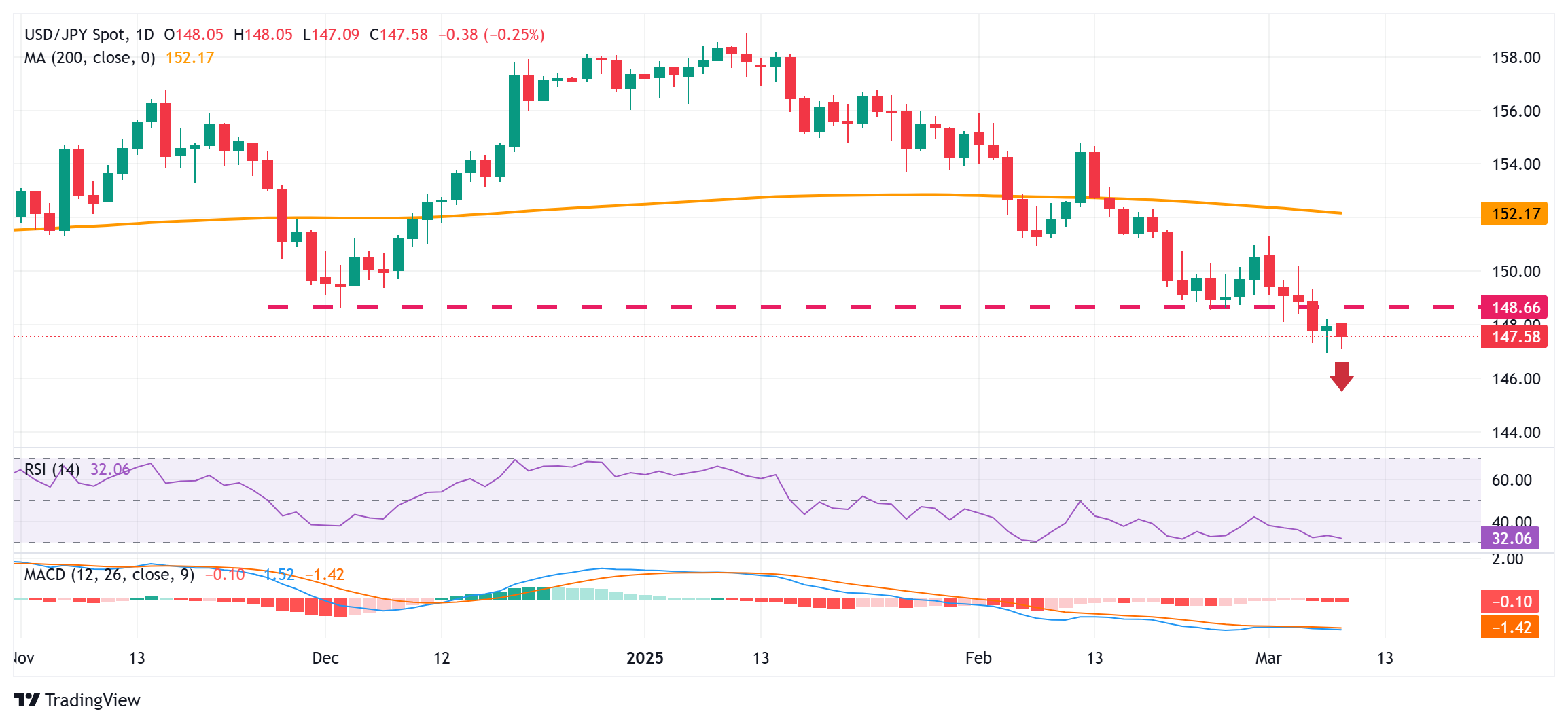提供最佳价差和条件
 了解更多
了解更多
The Japanese Yen (JPY) attracts fresh buyers at the start of a new week and moves back closer to its highest level since October touched against a broadly weaker US Dollar (USD) on Friday. Data released during the Asian session on Monday showed that the base pay in Japan surged to a 32-year high in January, while real cash earnings fell 1.8% on the back of persistent inflation. This comes on top of a growing confidence that bumper wage hikes seen last year will continue this year and backs the case for further interest rate hikes by the Bank of Japan (BoJ), which, in turn, is seen underpinning the JPY.
Meanwhile, hawkish BoJ expectations continue to push Japanese government bond (JGB) yields higher. The resultant narrowing of the rate differential in Japan and other countries turn out to be another factor driving flows towards the lower-yielding JPY. The USD, on the other hand, languishes near a multi-month low amid rising bets that the Federal Reserve (Fed) will cut interest rates multiple times this year, bolstered by weaker US jobs report on Friday. This contributes to the offered tone surrounding the USD/JPY pair and supports prospects for a further near-term depreciating move.

From a technical perspective, a sustained break and acceptance below the 147.00 mark would be seen as a fresh trigger for the USD/JPY bears and set the stage for an extension of a two-month-old downtrend. That said, the Relative Strength Index (RSI) on the daily chart is on the verge of breaking into oversold territory. Hence, it will be prudent to wait for some near-term consolidation or a modest bounce before positioning for any further depreciation.
Nevertheless, the USD/JPY pair seems vulnerable to weakening further below the 146.50 intermediate support and testing the 146.00 round figure. Some follow-through selling should pave the way for a fall towards the 145.25-145.20 zone en route to the 145.00 psychological mark and the next relevant support near the 144.80-144.75 region.
On the flip side, an attempted recovery might now confront stiff resistance near the 148.00 mark. Any further move up might be seen as a selling opportunity and remain capped near the 148.65-148.70 region. A sustained strength beyond the latter, however, could trigger a short-covering rally and lift the USD/JPY pair above the 149.00 mark, towards the 149.80-149.85 area en route to the 150.00 psychological mark and the 150.35-150.40 supply zone.
This indicator, released by the Ministry of Health, Labor and Welfare, shows the average income, before taxes, per regular employee. It includes overtime pay and bonuses but it doesn't take into account earnings from holding financial assets nor capital gains. Higher income puts upward pressures on consumption, and is inflationary for the Japanese economy. Generally, a higher-than-expected reading is bullish for the Japanese Yen (JPY), while a below-the-market consensus result is bearish.
Read more.Last release: Sun Mar 09, 2025 23:30
Frequency: Monthly
Actual: 2.8%
Consensus: 3.2%
Previous: 4.8%
Source: Ministry of Economy, Trade and Industry of Japan